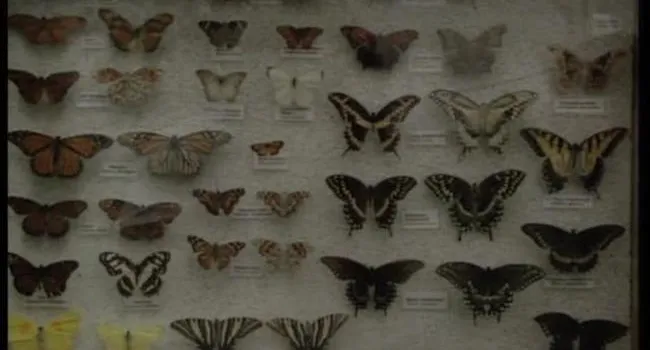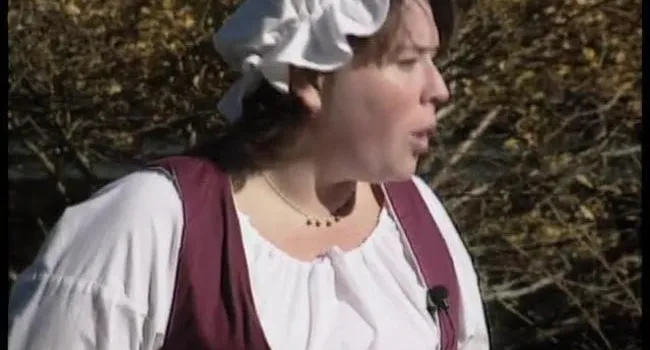Middleton Place, on the Ashley River near Charleston, South Carolina, was the home of the Middleton family, which included the president of the First Continental Congress and a signer of the Declaration of Independence. It is a lowcountry rice plantation that has been preserved to show how people lived during Colonial times. Construction of the home and formal gardens began in 1741. The symmetrical gardens have large butterfly-shaped ponds leading down to the river. The plantation stable yard was the working center of the plantation.
Cooking was often done outdoors to lessen the risk of fire inside the house. Volunteers prepared red rice and stewed pumpkins.
Sheep were raised for their wool and for food in Colonial America. Sheep shearing was a task performed in spring to late summer. If possible, the sheep’s fleece, averaging about 10 pounds, was cut off in one piece. After cutting, the fleece was fluffed up and carded to make all the fibers go in the same direction. When the cards were reversed, a roll of fiber, called a roll-off, was made. The roll-off was taken to the spinning wheel, where the fibers were twisted to make thread. Weavers then put the thread on a loom to weave into cloth for use as clothing, bed coverings, and other necessities.
Quilts were also necessities. Pieces of scrap cloth were filled with straw or cloth and sewn together with large running stitches. These quilts were used as blankets, mats, or rugs.
Coopers made baskets using reeds split from trees. The reeds were dyed to add color to a basket. Baskets were made using an over-and-under rotation. The blacksmith made items from metal or steel. A steel rod was put in a fire to get hot and was then bent into the desired shape. The metal piece was placed in water to cool.
Candles were made with melted beeswax, tallow, or bayberry. They could be made by pouring melted wax into a mold or by repeatedly dipping a string in a pot of warm wax. It would take 75 to 100 dips to make one candle. Candles were used carefully to conserve them since it took so long to make enough for the family to use. In the plantation house, candles were often placed in front of mirrors to reflect the candle's light, increasing the brightness without using more candles. Slaves usually used grease pots instead of candles.
Standards
- 3-2 The student will demonstrate an understanding of the exploration and settlement of South Carolina.
- The inhabitants of the early Carolina colony included native, immigrant, and enslaved peoples. To understand how these various groups interacted to form a new and unique culture, the student will utilize the knowledge and skills set forth in the follo...
- 3-2.4 Summarize the development of the Carolina colony under the Lords Proprietors and the royal colonial government, including settlement by and trade with the people of Barbados and the influence of other immigrant groups.
- 3-2.5 Explain the role of Africans in developing the culture and economy of South Carolina, including the growth of the slave trade; slave contributions to the plantation economy; the daily lives of the enslaved people; the development of the Gullah cu...
- The inhabitants of the early Carolina colony included native, immigrant, and enslaved peoples. To understand how these various groups interacted to form a new and unique culture, the student will utilize the knowledge and skills set forth in the follo...
- 3.2.2.ER Identify and analyze the ways people interact with the physical environment in different regions of the state, the country, and the world.
- This indicator was developed to encourage inquiry into the process which led to the formation of the U.S. government, including the convening of the Continental Congresses, the passage of the Articles of Confederation, and the adoption of the U.S. Constitution.
- 8.1.CE Analyze the factors that contributed to the development of South Carolina’s economic system and the subsequent impacts on different populations within the colony.



































